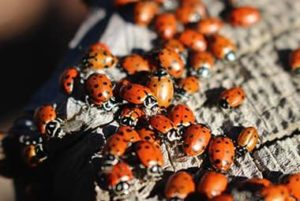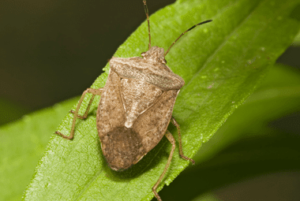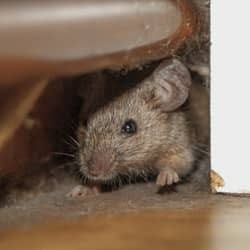Recently, I discovered that some new neighbors have taken up residence nearby. When I lifted up the lid to my outdoor garbage bin, a whole hoard of insects went scurrying away; they had been hiding in the crease where the lid fits onto the bin. I discovered a similar swarm underneath the trash can when I tipped it up on its wheels to roll it to the curb. The bugs in question were earwigs, and they seem to be out in large quantities right now. If that’s the case, we should discuss what you need to know about earwigs to make sure they don’t become a problem in your home.
Earwigs are bizarre-looking creatures that sometimes give people the creeps. They have long, thin bodies that are noticeably flattened. This body structure is important so that they can fit into tight crevices (like under trash cans) to keep safe in the warm months and to keep warm in the winter. Their most obvious physical characteristic, however, is their set of pincers on their back end (this has led them to be nicknamed “pincher bugs”). These pincers are quite large in comparison to an earwig’s body. They are often used for defense, though humans could suffer little harm from an earwig’s pinch.
Earwigs are omnivorous, which means they’ll cheerfully eat rotting plants or dead insects that they come across. Like centipedes, they are heavily moisture dependent and are most likely to be found in a home in a damp basement or garage or in a bathroom with a water leak. Urban legend would tell you that earwigs get their name from their tendency to hide in pillows so that they can enter the human ear at night. This is not true. A typical bedroom is much too dry for an earwig, and they have no interest in laying eggs in your brain. So, that’s good news, right?
If you have earwigs in your home, you should walk the perimeter of your house to try to find their primary harborage site. Like many pests, earwigs are extremely attracted to wood piles because they can hide in damp places underneath the bark. Wood piles should be moved away from the house as should leaves and other debris. If you have thick, leafy groundcover or climbing ivy, you are also at higher risk for an earwig invasion. Ivy in particular holds moisture incredibly well and does not dry out as grass does. If this ivy is on your exterior walls, it is a perfect, damp bridge that earwigs can use to enter your home.
Once exterior concerns are taken care of, you could also check the inside of your home for moisture issues. Sometimes, an earwig infestation is a good indicator of a plumbing leak that you might have otherwise missed. Also, be sure to take out your trash regularly and disinfect your trashcans often. I once visited an apartment shared by several college students. They had an earwig problem in the kitchen, and we quickly identified that the problem was that each student piled multiple (rather damp) bags of trash on the tile floor in the hope that one of the other roommates would take all the garbage out at once. Once the garbage removal was put on a regular schedule, the earwigs disappeared and no further intervention was needed.
If these suggestions do not work and you want to use a product to treat your home for earwigs, keep in mind that these are very quick pests and that a line of spray with an over-the-counter pest product may not really faze them. Running over the spray line certainly would not be enough to kill a healthy earwig. At Russell’s, we could approach the problem from a variety of angles, including targeted liquid treatments with products that will stick to the earwig’s exoskeleton or with baits. Give us a call at 865-584-8549 if you want to hear more about our treatment options or contact us here to get more information.
Earwigs: The Pincher Pests in Knoxville TN
Serving East Tennessee since 1971


